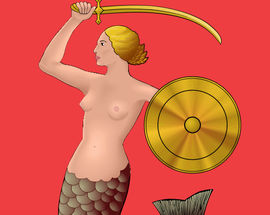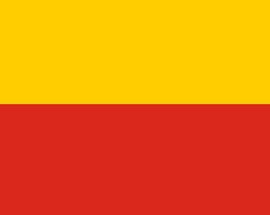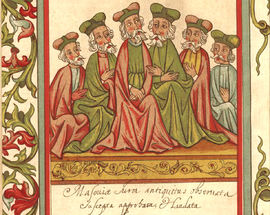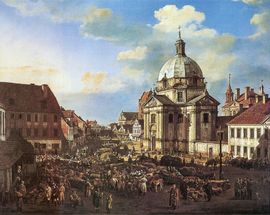A Brief History of Warsaw
more than a year agoEarly fortified settlements are believed to have existed in what is now the district of Bródno as far back as the 9th century, and while historians struggle to conclusively agree as to exactly when Warsaw was founded most appear to accept that the first recorded mention of the city can be traced to 1313. Things started looking up for the city in 1413, when the ruling Dukes decided to shift the capital of Mazovia from Czersk to Warsaw. Over the next century it gathered importance as a trading point, and was incorporated into the Kingdom of Poland in 1526. The town was expanding in both status and stature, though nothing was to prepare it for the bombshell that arrived in 1569. The Union of Lublin amalgamated Poland with Lithuania, and as such the decision was taken to centralize parliament and move it from Kraków to Warsaw. Twenty seven years later, in 1596, King Zygmunt III Vasa decided to follow suit and shifted his Royal Court north as well, thereby making Warsaw capital of this newly-formed commonwealth. Of course, Warsaw then was a different creature to the Warsaw of now. The old town area, secured by its walls, consisted of 169 houses, while another 204 homes stood just outside this protective boundary. In total just 14,000 people lived in the newborn capital. Trying times lay ahead.
Between 1665 and 1668 Warsaw was ransacked three times, and if it the natives thought that was bad you should have seen their faces in 1700; the Great Northern War kicked off when an anti-Swedish alliance comprised of Russia, Poland and Denmark launched the opening attack. The Swedes weren’t having any of it, and by 1702 their counter-attack had landed them at the gates of Warsaw. Over the next few years Warsaw was passed back and forth like a bag of sweets, sustaining heavy economic
and physical damage in the process. The war, a right epic scrap, drew to a close in 1721 and Warsaw was finally left to pick up the pieces and move forward.
The Collegium Nobilium, a posh boarding school for the landed classes, was opened in 1740, and this was promptly followed by Poland’s first library seven years later. This age of enlightenment promised much for Poland, a fact not lost on her three neighbours: Prussia, Russia and Austria. Little Poland was clearly getting too big for her boots, so the three acted swiftly by imposing the First Partition of Poland in 1772, a move which essentially robbed the country of a third of its territory and population. Nonetheless, her three bullying neighbours clearly hadn’t counted on Stanisław August Poniatowski, the country’s last king and arguably her finest. It was under his leadership the Constitution of May 3rd was ratified in 1791. This landmark code was the first of its kind in Europe (and only second in the world after the USA), with reforms focused on handing more power and freedom to the general populace. Poniatowski was hailed as almost visionary in his outlook, however his ideas once more stirred his neighbours into action. This time round both Prussia and Russia moved to weaken Poland in The Second Partition of Poland (1793), snatching away 308,000 sq/km of territory
and reducing her to just 223,000 sq/m. Provoked by this latest aggression the Poles fought back, launching ‘The Peasant Uprising’ of 1794. Led by Tadeusz Kościuszko the insurgents scored a notable victory at Racławicka, but eventually superior numbers won out and the rebellion ended in surrender. The following year Russia, Prussia and Austria joined together to carve what remained of Poland between them.
Napoleon offered the capital brief respite, and when his armies marched eastwards in 1807 he created a semi-independent Duchy of Warsaw. His failings on the battlefields of Russia led to defeat, and within eight years Russian forces had pushed the Frenchman back and regained Warsaw as their own; Poland had effectively been wiped off the map. Discontent with Russian rule was to come to a boil twice in the following decades: first in the form of the November Insurrection of 1831, and then again with the January Uprising of 1863. Both rebellions were brutally crushed, and saw more patriots packed off to serve penance in Siberia. Strangely, however, it was these dark years that saw Warsaw blossom. Under the auspice of Russian-born Mayor Sokrates Starynkiewicz the city developed at lightning pace, and by the time of his death in 1902 the town had acquired a modern sewage system, street-lighting, paved streets and over 2,500 newly planted trees. Still, resentment over foreign rule continued to linger, and it was only the outbreak of World War One that promised hope. The collapse of the Eastern Front saw the last Russian troops leave in 1915, though these were immediately replaced with German uniforms.
Only when Germany signed the armistice in 1918 was Poland finally freed from the shackles of occupation. Arriving overnight in a sealed wagon, Józef Piłsudski, a patriot who had been imprisoned in Magdeburg, reached Warsaw on November 11 to assume leadership of the nation. By the time of his death in 1935 this national hero witnessed the introduction of the złoty, a failed coup and the assassination of President Narutowicz. Even allowing for these, nothing came close to the defeat of the Red Army during the Polish-Soviet War of 1919-1921, a triumph which not only guaranteed Poland’s short-term future but Europe’s as well. The twenties and thirties saw Warsaw flourish into a confident, successful city, alas, we all know what was to come.
September 1, 1939 saw Nazi Germany start WWII with their attack on the Westerplatte Peninsula in north Poland. By morning Luftwaffe squadrons were firebombing Warsaw, and in spite of dogged resistance the capital finally fell on September 30th. The fate of the Jewish population, and the Warsaw Uprising, is documented in detail elsewhere in the guide, so fast for ward instead to January 17, 1945. Liberation of sorts had arrived, unfortunately for the Poles it meant spending much of the following five decades under Soviet hegemony. In the wave of Stalinist terror that followed businesses found themselves nationalized, and political and religious leaders imprisoned. Stalin died in 1953, but his legacy didn’t. The Warsaw Pact, a military treaty between eight communist states, was signed in 1955 (the same year Stalin’s parting gift to the city, the Palace of Culture, was completed). A year later Poznań exploded like a powder keg in what turned out to be the first street demonstrations against communism. The communists reacted in time honoured fashion, with their fists, and the final score stood at 76 dead (unofficial estimates suggest far, far more) and a city defeated. In a bid to appease the people several hardliners were dismissed and Władysław Gomułka was appointed as Poland’s premier. Limited social reforms and a small-scale lifting of press censorship followed, and a political thaw set in. This veneer of social happiness was shattered in 1970 when new protests broke out, this time in Gdańsk. Forty four died when the army suppressed the demonstrations, and for a while things appeared to settle down. Edward Gierek came in to replace Gomułka as First Secretary, and he set about turning the country around. Living standards increased, and for a time Gierek carried the tag of miracle worker. He wasn’t. Gierek had built a house of cards, propping up the Polish economy with half-mad policies based on acquiring mountains of foreign debt.
The oil crisis of 1973 saw the creditors come calling and by 1976 price increases were in the pipeline. A fresh batch of riots broke out across the nation, and military might was once more relied upon to bring the people to heel. The public was starting to get restless, but their protests needed focus and direction. That came in 1978 when Karol Wojtyła, born in Wadowice close to Kraków, was elected Pope in 1978. Wojtyła, who had adopted the name John Paul II, returned to Poland the following year, and his whirlwind tour of the country is seen by many as the pivotal moment when the nation gathered courage to defy the system. "Do not be afraid," spoke the pontiff to the masses, "Change the image of the land… this land." It was a veiled message, but a clear one, and from there on the fuse was lit. In the form of Pope John Paul II the Poles had found a spiritual direction, what was lacking was a physical one.
That came in the surprising shape of Lech Wałęsa, an unemployed electrician with an extravagant moustache and a podgy look. Within the space of a second he went from no-one to someone and bulldozed Polish politics into the 21st century. The year was 1980 and workers in the Lenin Shipyards in Gdańsk were fuming at the dismissal of a female crane operator. Talk and promise of strike was rife, and the atmosphere heated. On the spur of the moment Wałęsa climbed a gate and addressed those below. Inadvertently he had made himself the public face of Solidarność (Solidarity), a trade union that would prove the slingshot that felled communism. This time round the protestors had learned from their bloody mistakes and rather than confronting the tanks simply locked themselves in the shipyards. Leaders representing workers from across the country joined and hammered out a list of 21 demands, including the legalisation of trade unions. Days of tension followed, with tanks and militia standing menacingly outside, and for a moment Poland stood on a precipice. Amazingly it was the government that backed down, and on August 31 it signed an agreement meeting the demands. The first peaceful victory over communism had been won. This wasn’t to last – Solidarity continued to press for further reform, and with the Soviet Union looking likely to invade Polish President General Jaruzelski declared Martial Law on December 13, 1981.
Though Solidarity was officially dissolved, and its leaders imprisoned, it continued to operate underground. When Father Jerzy Popiełuszko, Solidarity’s chaplain, was abducted and murdered by the secret police over a million people attended his funeral. Renewed labour strikes and a faltering economy forced Jaruzelski into initiating talks with opposition figures in 1988, and the following year Solidarity was once again granted legal status. Soviet leader Mikhail Gorbachev had made it clear he wouldn’t intervene in Polish politics, and when Jaruzelski was pressured into holding partly free elections Solidarity swept the board with Wałęsa leading from the front. The communist regime collapsed and in 1990 Wałęsa was elected the first president of post-communist Poland.
Shock capitalist tactics were used to rotate Poland into a free market economy, and while this left several losers the nation emerged stronger than before. Acceptance into the European Union in 2004 was proof of this, and Poland’s rise was further illustrated by the decision to award it co-responsibility for the Euro 2012 Football Championships. Today Poland, with Warsaw as its figurehead, stands as an exemplary member of the EU, and notably was the one European nation to avoid recession in the recent global crisis.



_m.jpg)




Comments